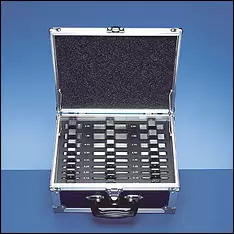Description/ Specification of Vibration Analyzer
A vibration analyzer is a critical tool in the field of predictive maintenance and industrial engineering. It is a sophisticated device designed to monitor, analyze, and diagnose the vibrational characteristics of machinery and equipment. By capturing and interpreting the intricate patterns of vibrations, it facilitates the early detection of potential faults or irregularities within the machinery, thereby preemptively preventing costly breakdowns and ensuring uninterrupted production processes. The vibration analyzer employs advanced sensors and data processing algorithms to measure and assess the amplitude, frequency, and acceleration of vibrations, providing engineers and technicians with valuable insights into the operational health and performance of complex industrial systems. This enables them to make informed decisions regarding maintenance schedules, repairs, and component replacements, optimizing the overall efficiency and reliability of the industrial setup. Furthermore, modern vibration analyzers often come equipped with intuitive interfaces and comprehensive reporting features, allowing for the easy visualization and interpretation of the collected data. The integration of such advanced technology not only enhances the precision and accuracy of diagnostic assessments but also streamlines the overall maintenance workflow, reducing downtime and improving the longevity of industrial equipment. As a result, the use of vibration analyzers has become indispensable in various sectors, including manufacturing, energy production, and transportation, contributing significantly to the seamless functioning and sustainability of industrial operations on a global scale.
Vibration Analyzer
A vibration analyzer is a critical tool in the field of predictive maintenance and industrial engineering. It is a sophisticated device designed to monitor, analyze, and diagnose the vibrational characteristics of machinery and equipment. By capturing and interpreting the intricate patterns of vibrations, it facilitates the early detection of potential faults or irregularities within the machinery, thereby preemptively preventing costly breakdowns and ensuring uninterrupted production processes. The vibration analyzer employs advanced sensors and data processing algorithms to measure and assess the amplitude, frequency, and acceleration of vibrations, providing engineers and technicians with valuable insights into the operational health and performance of complex industrial systems. This enables them to make informed decisions regarding maintenance schedules, repairs, and component replacements, optimizing the overall efficiency and reliability of the industrial setup. Furthermore, modern vibration analyzers often come equipped with intuitive interfaces and comprehensive reporting features, allowing for the easy visualization and interpretation of the collected data. The integration of such advanced technology not only enhances the precision and accuracy of diagnostic assessments but also streamlines the overall maintenance workflow, reducing downtime and improving the longevity of industrial equipment. As a result, the use of vibration analyzers has become indispensable in various sectors, including manufacturing, energy production, and transportation, contributing significantly to the seamless functioning and sustainability of industrial operations on a global scale.
